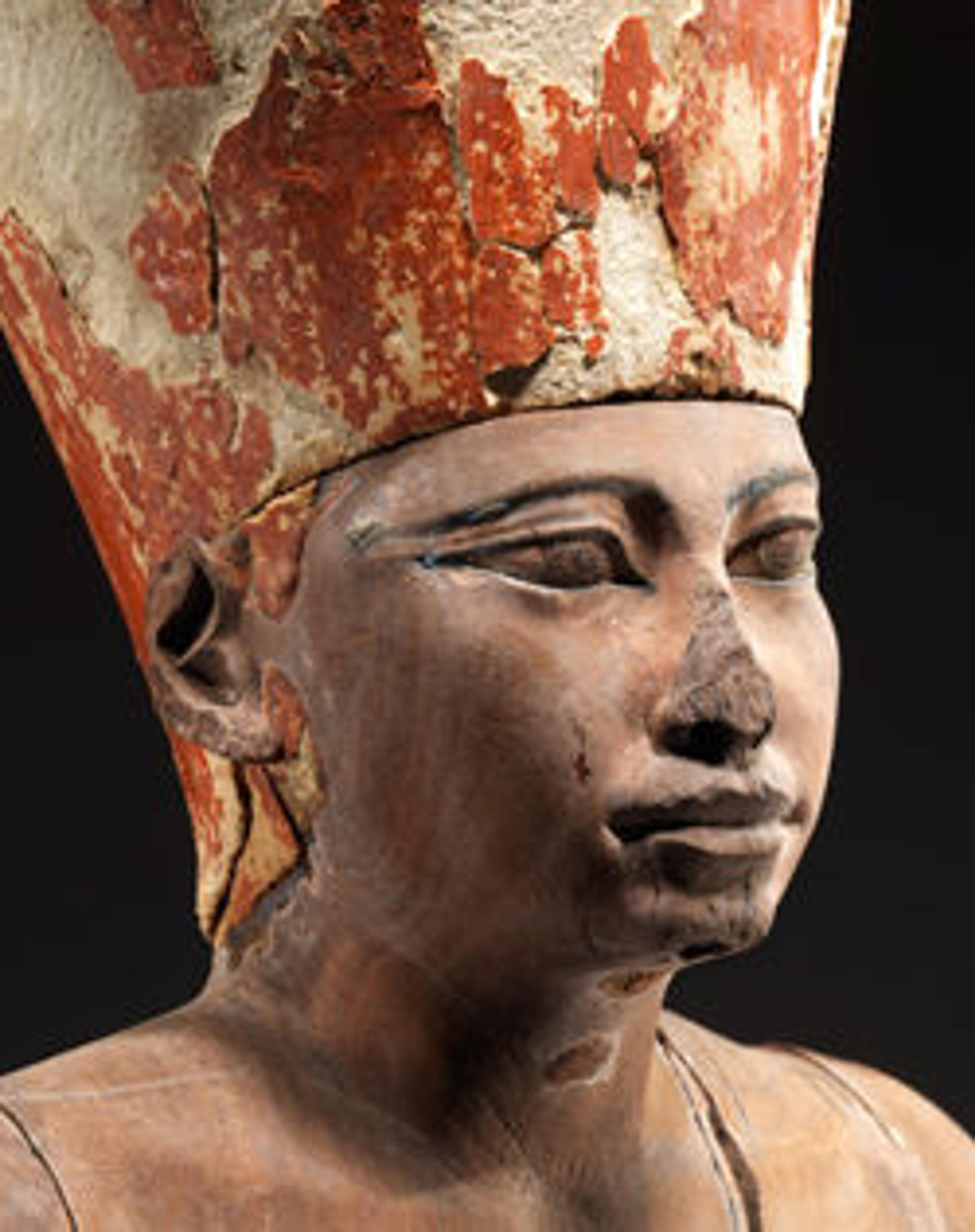Head of a King
This head was originally understood as most likely an image of King Amenemhat I (ca. 1981–1952 B.C.), but is now dated to the first half of Dynasty 13 (ca. 1800–1750 B.C.). Like works of the early Middle Kingdom, the face is youthful and unlined, but lacks other characteristics of early Dynasty 12 royal sculpture. The sensual mouth brings to mind depictions of the later Dynasty 12 king Amenemhat III (ca. 1859–1813 B.C.), but the placid expression and style of the ears prevent an identification with this king or one of his immediate successors. Instead, it belongs to a sculptural school of early Dynasty 13, which presented kings as strong young heroes.
For more on this object, see Curatorial Interpretation below.
For more on this object, see Curatorial Interpretation below.
Artwork Details
- Title: Head of a King
- Period: Middle Kingdom
- Dynasty: first part of Dynasty 13
- Date: ca. 1802–1749 B.C.
- Geography: From Egypt
- Medium: Quartzite
- Dimensions: H. 18.3 cm (7 3/16 in.); W. 13.3 cm (5 1/4 in.); D. 17 cm (6 11/16 in.)
- Credit Line: Gift of J. Pierpont Morgan, 1912
- Object Number: 12.183.6
- Curatorial Department: Egyptian Art
More Artwork
Research Resources
The Met provides unparalleled resources for research and welcomes an international community of students and scholars. The Met's Open Access API is where creators and researchers can connect to the The Met collection. Open Access data and public domain images are available for unrestricted commercial and noncommercial use without permission or fee.
To request images under copyright and other restrictions, please use this Image Request form.
Feedback
We continue to research and examine historical and cultural context for objects in The Met collection. If you have comments or questions about this object record, please contact us using the form below. The Museum looks forward to receiving your comments.
